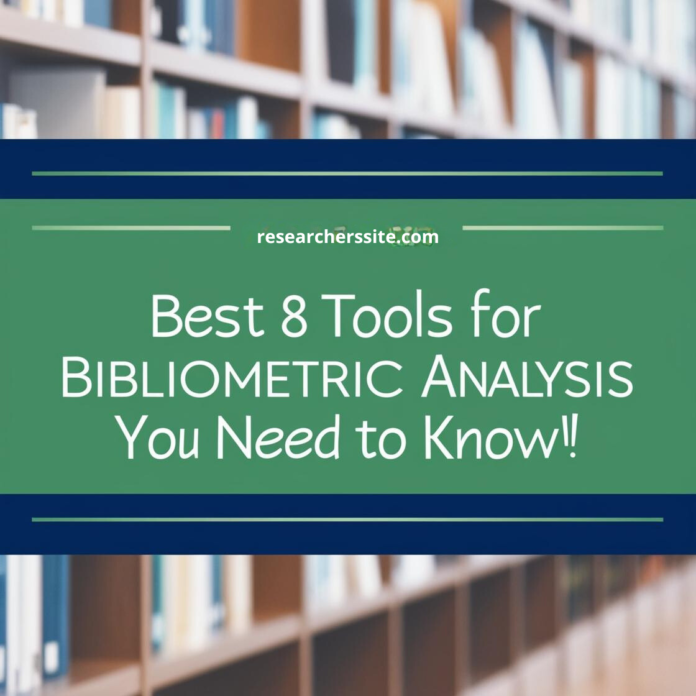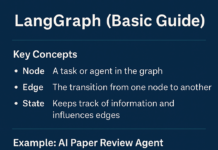In today’s fast-paced research environment, staying ahead of the curve is crucial. Bibliometric analysis has become an indispensable method for evaluating scientific literature, tracking research trends, and identifying key contributors in various fields. Whether you’re a seasoned researcher or a newcomer, the right tools can make all the difference. In this blog post, we’ll explore the best 8 bibliometric analysis tools that can elevate your research and provide valuable insights.
No #1. ScientoPy
Unlock Python-Powered Bibliometric Analysis
ScientoPy is an open-source Python-based tool designed for analyzing and visualizing bibliometric data. It simplifies the process of handling large datasets and offers customizable graphs and charts.
- Key Features:
- Easy data import from databases like Scopus and Web of Science.
- Generates trend analysis over time.
- Produces co-authorship and keyword co-occurrence networks.
Why Choose ScientoPy? If you’re comfortable with Python and need a flexible tool that allows for customization, ScientoPy is an excellent choice.
No #2. HistCite
Visualize Citation Relationships Over Time
HistCite is a powerful software for mapping and visualizing citation relationships. It helps researchers understand the historical development of a specific field.
- Key Features:
- Generates chronological citation maps.
- Identifies core articles and authors.
- Simple interface for quick analysis.
Why Choose HistCite? Ideal for those who want to explore the evolution of research topics and identify seminal works.
No #3. Biblioshiny
User-Friendly Interface Without Coding
Biblioshiny is a web-based application for the Bibliometrix R-package. It allows users to perform comprehensive bibliometric analyses without any coding knowledge.
- Key Features:
- Interactive web interface.
- Advanced statistical analysis.
- Visualizations like thematic maps and trend plots.
Why Choose Biblioshiny? Perfect for researchers who prefer a graphical interface over coding but still want advanced analytical capabilities.
No #4. CitNetExplorer
Explore and Analyze Citation Networks
CitNetExplorer is designed to visualize and analyze large-scale citation networks. It’s particularly useful for exploring the relationships between publications.
- Key Features:
- Handles large datasets efficiently.
- Detailed exploration of citation networks.
- Integration with VOSviewer for extended functionalities.
Why Choose CitNetExplorer? Best suited for in-depth analysis of citation connections within extensive datasets.
No #5. VOSviewer
Create and Visualize Bibliometric Networks
VOSviewer is a popular tool for constructing and visualizing bibliometric maps. It supports various types of analysis, including co-authorship and co-citation networks.
- Key Features:
- User-friendly interface.
- Generates detailed visualization maps.
- Supports text mining features.
Why Choose VOSviewer? Ideal for visual thinkers who benefit from graphical representations of complex data.
No #6. CiteSpace
Detect Emerging Trends and Patterns
CiteSpace is a Java-based application that helps researchers visualize and analyze trends in scientific literature.
- Key Features:
- Identifies emerging trends and burst terms.
- Visualizes collaboration networks.
- Offers timeline and cluster views.
Why Choose CiteSpace? Great for researchers interested in tracking the evolution of research fronts and emerging topics.
No #7. BibExcel
Versatile Tool for Data Preparation
BibExcel is a flexible tool designed for processing bibliographic data, making it easier to prepare data for analysis.
- Key Features:
- Supports various data formats.
- Prepares data for network analysis.
- Generates frequency lists and matrices.
Why Choose BibExcel? Suitable for those who need to preprocess data for use in other bibliometric tools.
No #8. BiblioMagika
Simplify Data Cleaning and Preparation
BiblioMagika provides invaluable data preparation capabilities, making it easier to manage author name disambiguation, affiliation standardization, and data cleaning.
- Key Features:
- Automated data cleaning processes.
- Efficient management of bibliographic records.
- Enhances the accuracy of subsequent analyses.
Why Choose BiblioMagika An excellent choice for ensuring your data is clean and reliable before analysis.
Conclusion
Bibliometric analysis is a powerful method for gaining insights into scientific literature, and the right tools can significantly enhance the quality and efficiency of your research. Whether you need advanced visualization, user-friendly interfaces, or robust data processing, there’s a tool on this list to meet your needs.
Take the next step in your research journey by incorporating these tools into your workflow.
Which of these tools have you tried? Share your experiences or favorites in the comments below!
Don’t forget to share this post with colleagues and friends who could benefit from these resources.














